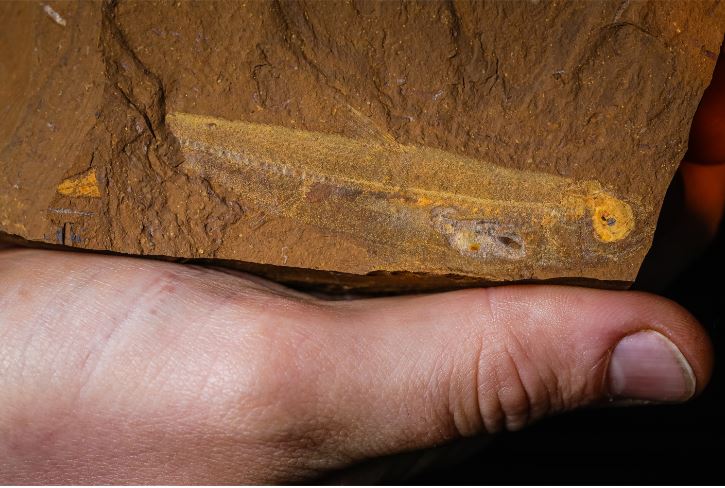
A team of Australian and international scientists have discovered thousands of well preserved ancient specimens from the Miocene epoch (23m – 5m years ago) in inland NSW, including extinct rainforest plants, almost intact insects, spiders and fish, and even a small bird feather.
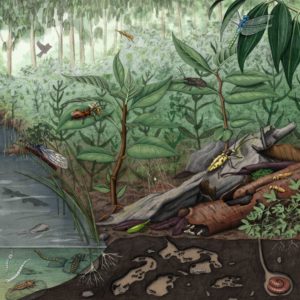
The team’s findings, just published in Science Advances, follows three years of investigations at the major new fossil site named McGraths Flat. Located in NSW Central Tablelands near the town of Gulgong – an area dubbed Australia’s ‘Dead Heart’ about 100 years ago – the new paper describes one of only a handful of fossil sites in Australia that can be classified as a ‘Lagerstätte’ – a ‘storage site’ (in German) that contains fossils of exceptional quality.
Since the site was found in 2017, researchers have been secretly excavating the site.
Led by Australian Museum and University of New South Wales (UNSW) palaeontologist Dr Matthew McCurry and Dr Michael Frese, of the University of Canberra, the site reveals new information about a time of immense change in Australia.
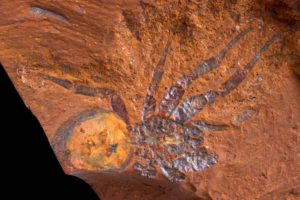 As the Australian continent continued its drift northwards after separating from Antarctica and South America, an enormous richness and variety of plant and animal life came to life in the early Miocene. However, this came to an abrupt end around 14 million years ago when climate changes known as the ‘Middle Miocene Disruption’ caused widespread extinctions.
As the Australian continent continued its drift northwards after separating from Antarctica and South America, an enormous richness and variety of plant and animal life came to life in the early Miocene. However, this came to an abrupt end around 14 million years ago when climate changes known as the ‘Middle Miocene Disruption’ caused widespread extinctions.
In the latter half of the Miocene, Australia gradually became more and more arid, and rainforests turned into the dry shrublands and deserts that now characterise the landscape.
The newly discovered fossil site provides an unprecedented look into what Australian ecosystems were like prior to this aridification, says Dr McCurry, adding the fossils formed between 11 million and 16 million years ago and are important for understanding the history of the Australian continent.
“The fossils we have found prove that the area was once a temperate, mesic rainforest and that life was rich and abundant here in the Central Tablelands, New South Wales,” he says.
“Many of the fossils that we are finding are new to science and include trapdoor spiders, giant cicadas, wasps and a variety of fish.”
Until now it has been difficult to tell what these ancient ecosystems were like, but the level of preservation at this new fossil site means that even small fragile organisms like insects turned into well-preserved fossils, researchers say.
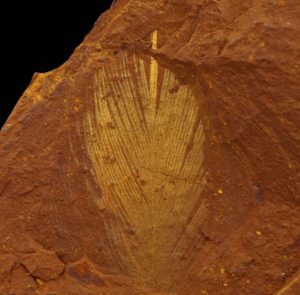
“Fossil feathers are incredibly rare,” says Flinders University ARC DECRA fellow into bird evolution Dr Jacqueline Nguyen, who is also part of the Australian Museum Research Institute and UNSW Earth and Sustainability Science Research Centre.
“This feather is only about the size of a fingerprint but it’s so well preserved that we can see the microscopic structures that give the feather its colour,” she says.
“Based on the size, shape and arrangement of these microscopic structures, the feather was likely dark or iridescent.”
Associate Professor Michael Frese, who imaged the fossils using stacking microphotography and a scanning electron microscope, said that the fossils from McGraths Flat show an incredibly detailed preservation.
“Using electron microscopy, I can image individual cells of plants and animals and sometimes even very small subcellular structures,” says Associate Professor Frese.
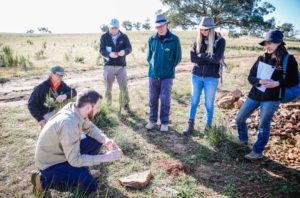
“The fossils also preserve evidence of interactions between species. For instance, we have fish stomach contents preserved in the fish, meaning that we can figure out what they were eating. We have also found examples of pollen preserved on the bodies of insects so we can tell which species were pollinating which plants.
“The discovery of melanosomes (subcellular organelles that store the melanin pigment) allows us to reconstruct the colour pattern of birds and fishes that once lived at McGraths Flat.
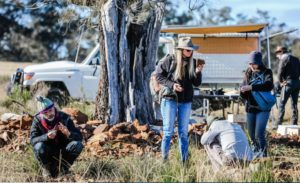 The fossils were found within an iron-rich rock called goethite – not usually thought of as a source of exceptional fossils.
The fossils were found within an iron-rich rock called goethite – not usually thought of as a source of exceptional fossils.
“We think that the process that turned these organisms into fossils is key to why they are so well preserved. Our analyses suggest that the fossils formed when iron-rich groundwaters drained into a billabong, and that a precipitation of iron minerals encased organisms that were living in or fell into the water,” Dr McCurry says.

First found in 2017, McGraths Flat is named after farmer Nigel McGrath who discovered the first fossils on his land. Gulgong is a Wiradjuri word that means ‘deep waterhole’.
The field work at McGraths Flat was funded through the generous donation from a descendant of Robert Etheridge, an English palaeontologist who came to Australia in 1866. Etheridge joined the Australian Museum in 1887 as Assistant Palaeontologist and in 1895 was made Curator of the Museum.
The McGraths Flat plant fossils provides “a window into the vegetation and ecosystems of a warmer world, one that we are likely to experience in the future,” adds Royal Botanic Gardens Victoria’s Professor David Cantrill.





